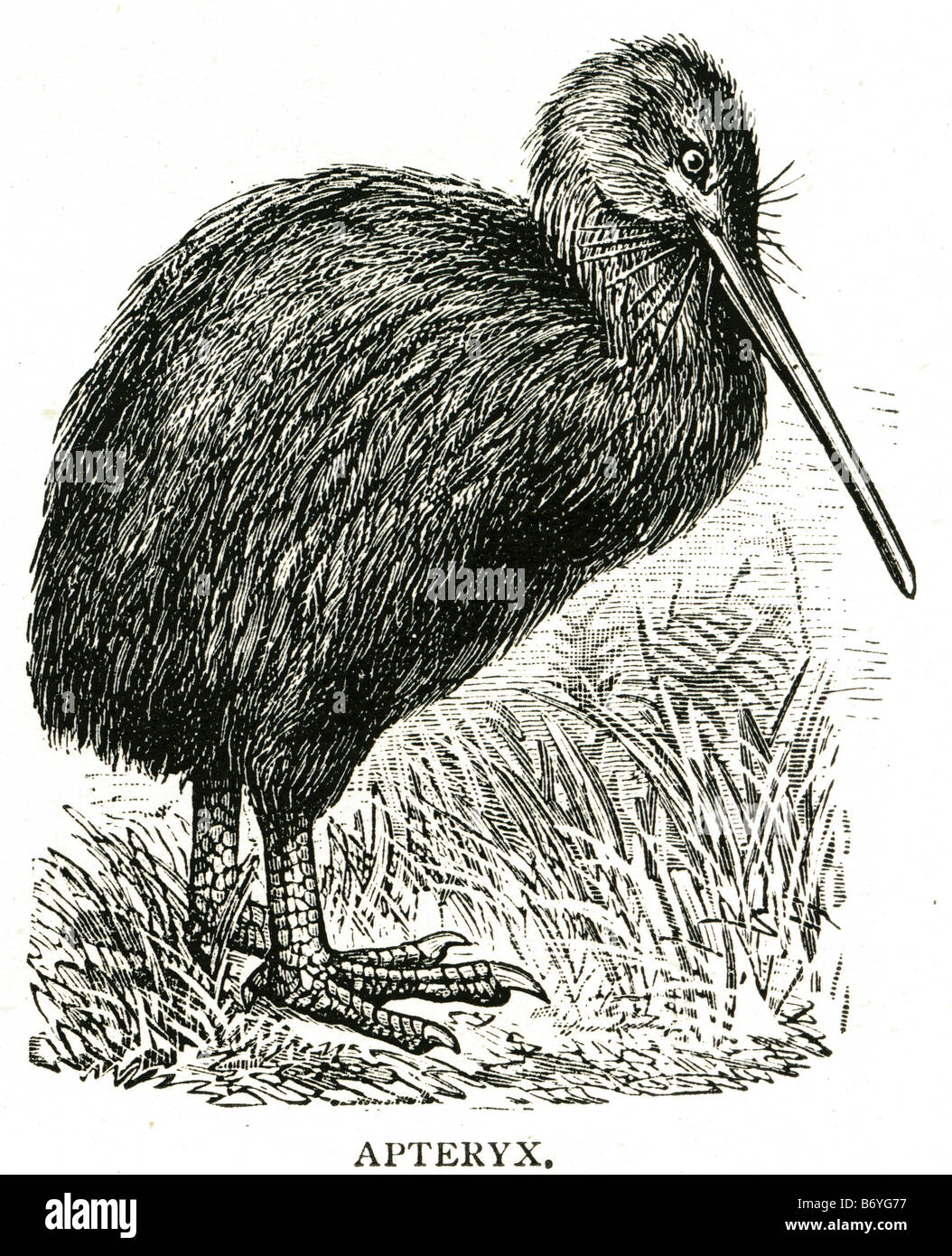apteryx flightless Apterygidae ratites endangered New Zealand

Image details
Contributor:
19th era / Alamy Stock PhotoImage ID:
B6YG77File size:
50.3 MB (2.9 MB Compressed download)Releases:
Model - no | Property - noDo I need a release?Dimensions:
3777 x 4655 px | 32 x 39.4 cm | 12.6 x 15.5 inches | 300dpiMore information:
kiwi is any of the species of flightless birds endemic to New Zealand of the genus Apteryx (the only genus in family Apterygidae). At around the size of a domestic chicken, kiwi are by far the smallest living ratites. All kiwi species are endangered. The kiwi is also a national symbol of New Zealand. The kiwi lays the largest egg in relation to its body size. There are five accepted species of kiwi (one of which has four sub-species), plus one to be formally described. The largest species is the Great Spotted Kiwi or Roroa, Apteryx haastii, which stands about 45 cm (18 in) high and weighs about 3.3 kg (7.3 lb). (Males about 2.4 kg (5.3 lb)) It has grey-brown plumage with lighter bands. The female lays just one egg, with both sexes incubating. Population is estimated to be over 20, 000, distributed through the more mountainous parts of northwest Nelson, the northern West Coast, and the Southern Alps. The very small Little Spotted Kiwi, Apteryx owenii is unable to withstand predation by introduced pigs, stoats and cats and is extinct on the mainland because of these reasons. About 1350 remain on Kapiti Island and it has been introduced to other predator-free islands and appears to be becoming established with about 50 'Little Spots' on each island. A docile bird the size of a bantam, it stands 25 cm (9.8 in) high and the female weighs 1.3 kg (2.9 lb). She lays one egg which is incubated by the male. The Rowi, also known as the Okarito Brown Kiwi or Apteryx rowi, is a recently identified species, slightly smaller, with a greyish tinge to the plumage and sometimes white facial feathers. Females lay as many as three eggs in a season, each one in a different nest. Male and female both incubate. Distribution of these kiwi are limited to a small area on the west coast of the South Island of New Zealand, however studies of ancient DNA have revealed that in prehuman times it was far more widespread up the west coast of the South Island and was present in the lower half